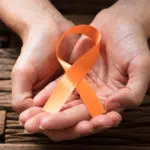National Developmental Disabilities Awareness Month (D.D.A.M.), observed throughout March, is a nationwide event to raise awareness about the inclusion of people with developmental disabilities and address the barriers that those with disabilities face. Inclusion is necessary since about 15% of the world’s population lives with a disability. D.D.A.M. is about understanding the relationship between the way people function and how they participate in society and making sure everybody has the same opportunities in every aspect of life to the best of their abilities. Find out why acceptance is a fundamental element of D.D.A.M. and what you can do to support this initiative.
History of National Developmental Disabilities Awareness Month
Back in the 1960s, people with intellectual and developmental disabilities (I.D.D.) were regarded as ‘mentally disabled,’ and often relegated to the back rooms of family homes or underfunded state-run institutions open to neglect and abuse.In the early 1960s, President Kennedy leveraged his family’s personal experience with his sister Rosemary’s disability and used the power of the Presidency to bring attention to the needs of people experiencing life with an intellectual and developmental disability (I.D.D.). He convened a Presidential Panel focused on the exclusion from education, employment, and community participation suffered by people with I.D.D.The D.D. Act of 1984 set up much of the system we all experience today. The emphasis on goals for services for people with developmental disabilities is “to achieve their maximum through increased independence, productivity, and integration into the community.” State Developmental Disabilities Councils were implemented in all states and territories. These were intended to provide additional training to individuals, families, and service delivery systems. They were to develop a statewide strategic plan for services over the next five years to build on community needs.In 1987 President Reagan proclaimed March as National Developmental Disability Awareness Month to focus awareness on the potential of citizens with I.D.D. to work, contribute, and enjoy typical lives.In 1990, another landmark year, President Bush signed the Americans with Disabilities Act (D.D.). The act was amended again to move from the goals of independence, integration, and productivity toward interdependence, inclusion, and recognition of individual contributions. Training opportunities were expanded to include professionals, paraprofessionals, family members, and individuals with developmental disabilities and advocate for innovative public policy and community acceptance.The D.D. Act continues to grow to include affirmation of individual dignity, person-centered goals, and multicultural focus inclusive of individual and family participation.
National Developmental Disabilities Awareness Month timeline
Parents all over the country begin refusing to place their family members with disabilities in institutional care and organize into The Arc or what was known as the Association of Mentally Retarded Citizens.
The Individuals with Disabilities Education Act is reauthorized, ensuring that all children with disabilities have access to a “free appropriate public education.”
President Reagen designates March as National Developmental Disabilities Awareness Month.
The Americans with Disabilities Act (ADA) is signed into law, prohibiting discrimination against people with disabilities in public life.
National Developmental Disabilities Awareness Month FAQs
What does disability awareness mean?
Disability awareness signifies educating society regarding disability and how we as individuals can bring about the necessary change. Learning acceptance is the fundamental approach to having an understanding of disability awareness, which can take place anywhere such as at home, school, workplace, and health institutes.
Why is disability inclusion important?
Disability inclusion means understanding the relationship between the way people function and how they participate in society and making sure everybody has the same opportunities to participate in every aspect of life to the best of their abilities and desires. Companies have greater opportunities than ever before to bring in people with disabilities, as customers and clients, and also as employees and managers.
What are the five developmental disabilities?
There are five types of developmental disabilities which include autism spectrum disorder (A.S.D.), cerebral palsy (C.P.), intellectual disability (I.D.), attention deficit hyperactivity disorder (A.D.H.D.), and learning disabilities.
How to Observe National Developmental Disabilities Awareness Month
-
Share on social media
Social media is a great way to connect with your community and raise awareness about developmental disabilities. By posting to your social media channels, you will amplify the voices of people with disabilities. Whether it is about inclusion in the workplace, the school, or the community, share it with your followers to spread awareness
-
Wear orange
Orange is a color symbolizing energy and positivity. It’s also the official color of Developmental Disabilities Awareness Month. One of the easiest ways to recognize D.D. Awareness Month is to invite your team to wear orange. So grab your orange attire, and let’s celebrate!
-
Put a smile on a child’s face
Let those children with developmental disabilities feel your love and support. Help them reach their dreams and encourage them to unleash their inner potential. One of the most meaningful ways you can do this is by donating to causes for disability awareness and/or supporting events that raise understanding of developmental disabilities.
5 Important Facts About Developmental Disabilities
-
When does it begin?
Most developmental disabilities begin before a baby is born, but some can happen after birth because of injury, infection, or other factors.
-
What causes it?
Most developmental disabilities are thought to be caused by a complex mix of factors including genetics, parental health and behaviors (such as smoking and drinking) during pregnancy, birth complications, infections, and exposure to high levels of environmental toxins, such as lead during pregnancy.
-
Over one billion
About 15% of the world's population live with a disability.
-
The numbers are increasing substantially
More and more people are living with disabilities due to demographic change including population aging and the global increase in chronic health conditions.
-
Inadequate healthcare
Half of the people with disability cannot afford healthcare, compared to a third of people without disabilities.
Why National Developmental Disabilities Awareness Month is Important
-
It seeks to stop bullying and stereotypes
Bullying of students with special needs has become a serious and growing national problem. Some reports indicate that nearly 85% of students with special needs experience bullying. Stereotypes about people with disabilities contribute to the prevailing high unemployment rate among people with disabilities.
-
It fosters peer relationships
D.D.A.M. is a time to create strategies and activities that help students better understand the needs and differences of their peers with disabilities. It helps to foster peer relationships and helps students develop empathy that can have positive outcomes for all students.
-
It educates the community
It is helpful to educate our community to be aware that developmental disabilities are not always evident. For example, some disabilities are visible — a person who uses a wheelchair or crutches to ambulate. Oher disabilities — cognitive challenges that affect the way a person speaks, learns, or interacts with others are not easily recognized or noticeable.
National Developmental Disabilities Awareness Month dates
| Year | Date | Day |
|---|---|---|
| 2023 | March 1 | Wednesday |
| 2024 | March 1 | Friday |
| 2025 | March 1 | Saturday |
| 2026 | March 1 | Sunday |
| 2027 | March 1 | Monday |















































































































































